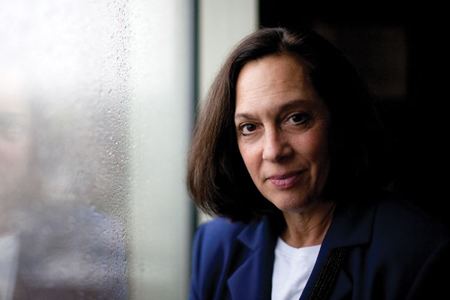Role Justice Name Joette Katz | Religion Jewish Nationality United States | |
 | ||
Born February 3, 1953 (age 72) Brooklyn, New York ( 1953-02-03 ) Alma mater Brandeis UniversityUniversity of Connecticut School of Law Books Connecticut Criminal Caselaw Handbook: A Practitioner's Guide Education Hartford Seminary, University of Connecticut School of Law, Brandeis University, University of Connecticut | ||
Nominated by Lowell P. Weicker, Jr. | ||
Rep buck taylor poses questions to connecticut s dcf commissioner joette katz
Joette Katz (born February 3, 1953) is Commissioner of the Connecticut Department of Children and Families, and a former Associate Justice of the Connecticut Supreme Court, where she also served as the administrative judge for the state appellate system.
Contents
- Rep buck taylor poses questions to connecticut s dcf commissioner joette katz
- DCF Racial Justice Summit 2018 Closing Reflections
- Early life and family
- Education and legal training
- Professional career
- Awards and honors
- Notable cases and opinions
- References
DCF Racial Justice Summit 2018: Closing Reflections
Early life and family

Katz was born and raised in Brooklyn, New York. Her parents were Harry and Sayre Katz. She is married to Philip Rubin, CEO of Haskins Laboratories, and lives in Fairfield, Connecticut. They have two children, Jason Rubin and Samantha Katz.
Education and legal training

Katz went to high school at the Berkeley Institute in Brooklyn (now known as the Berkeley Carroll School). She received a bachelor of arts degree, graduating cum laude, in 1974 from Brandeis University and her law degree, graduating cum laude, from the University of Connecticut School of Law in 1977.
Professional career

Katz started her professional career in 1977 as an attorney at the law firm of Winnick, Vine and Welch (now Winnick, Vine, Welch & Teodosio [1]) in Shelton, Connecticut. From 1978 to 1981 she was as an assistant public defender in the appellate unit of the office of the Chief Public Defender [2] in New Haven, Connecticut. From 1981 to 1983 she was an assistant public defender in the trial unit in Bridgeport, Connecticut. She served as Chief of Legal Services for the Office of the Chief Public Defender from 1983 to 1989 and was the first woman to serve in this role in Connecticut.
Katz was nominated for the Superior Court bench by Gov. William A. O'Neill in 1989. She was elevated to the state Supreme Court by Gov. Lowell P. Weicker, Jr. in 1992. Her appointment at age 39 made her the youngest justice ever appointed to the Connecticut Supreme Court[3][4]. She was reappointed by Gov. John G. Rowland in 2001 and Gov. M. Jodi Rell in 2009 [5]. From 2006 until her resignation, she served as administrative judge for the state appellate system, a position she previously held from 1994-2000.
Justice Katz has served on numerous committees and commissions, including the American Law Institute Model Penal Code: Sentencing project [6], the Connecticut chapter of the American Inns of Court, the Connecticut Advisory Committee on Appellate Rules [7] (which she chaired), the Connecticut Code of Evidence Oversight Committee [8] (which she chaired), the Connecticut Criminal Practice Commission [9], the Connecticut Law Revision Commission [10], the Connecticut Public Defender Services Commission [11], and the Connecticut Client Security Fund [12] (which she currently chairs).
She is co-author of the book, Connecticut Criminal Caselaw Handbook: A Practitioner’s Guide, published in 1989 by the Connecticut Law Tribune.
Justice Katz has been an instructor of ethics at the Yale Law School in New Haven. She also has been an instructor of criminal law and ethics at the Quinnipiac University School of Law in Hamden and also served from 1981 to 1984 as an instructor in legal research and writing, Moot Court, and appellate advocacy at the University of Connecticut School of Law.
On November 30, 2010, incoming Gov. Dannel Malloy named Justice Katz to head the troubled Connecticut Department of Children and Families (DCF). She stepped down from the Connecticut Supreme Court on January 5, 2011 in anticipation of assuming the DCF post. Justice Katz said she looked forward to the challenge of leading DCF, noting, "I can think of few things more important than the mission of this agency."
Commissioner Katz was confirmed as Commissioner of DCF by unanimous vote of the Connecticut State Senate on February 4, 2011.
Awards and honors
Justice Katz has received many awards and honors, including:
Notable cases and opinions
As an Associate Justice of the Connecticut Supreme Court, Justice Katz sat on over 2,000 cases and authored over 400 majority opinions. Some notable and/or controversial opinions and cases include:
